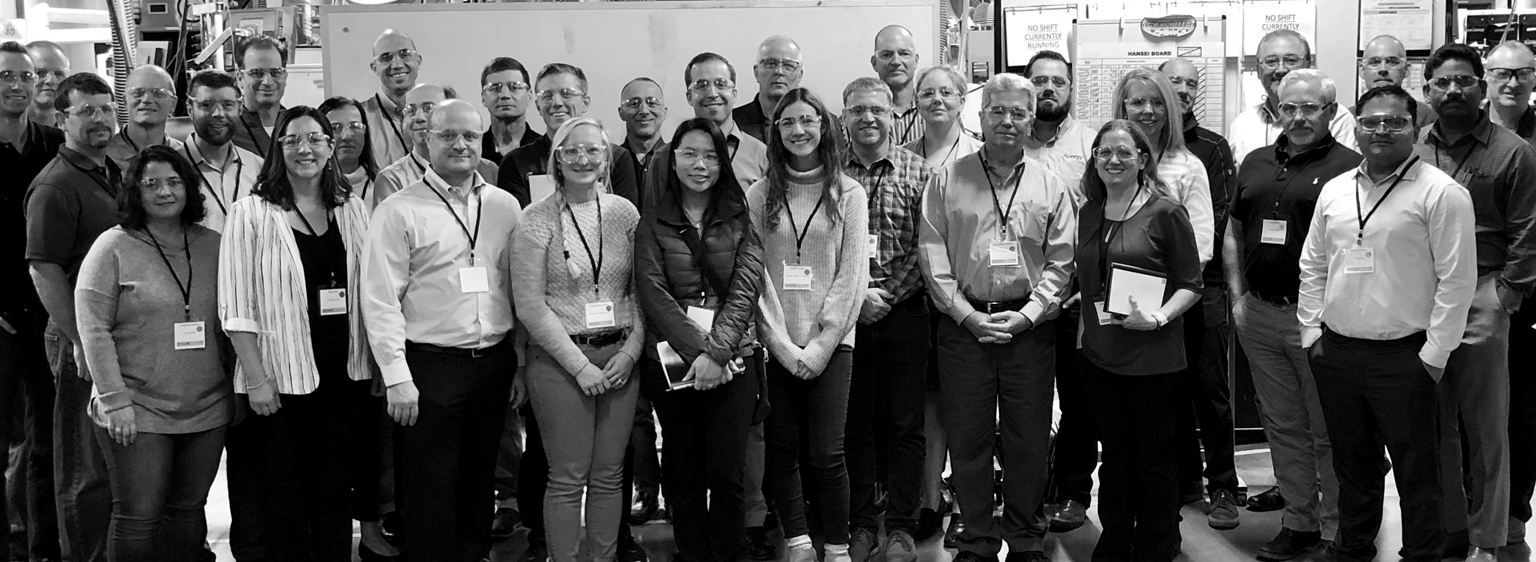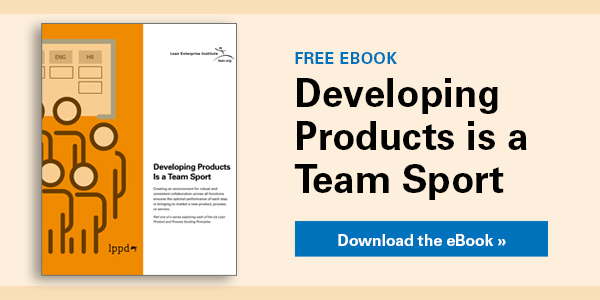In October, 45 members of LEI’s Lean Product and Process Development Learning Group (LPPD) gathered in Peoria, Illinois, at Caterpillar’s visitor center and proving grounds to learn and reflect on making engineering work visible.
The Lean Enterprise Institute formed the Lean Product and Process Development (LPPD) initiative to work with and bring together forward-thinking organizations to accelerate the spread of lean thinking and practice in product and process development across diverse industries.
The organizations that met in Illinois are co-learning partners in the LPPD Learning Group seeking to transform their product and process development systems by changing how they create new value. A valuable aspect of the Learning Group is the ability of the organizations to come together and meet twice annually, with one partner acting as the primary host.
Building a Design Factory
One learning group partner kicked off the meeting by sharing what it has dubbed the “Design Factory” — a system for visualizing engineering’s work. The purpose is to identify problems early in the product development process so teams can apply countermeasures before they disrupt a program.
Accelerating Learning with a Dojo
Another learning group member shared how its engineering team accelerated learning by creating a dojo — or immersive learning environment — on vacant factory space. The team’s mantra became “Practice how you want to play,” meaning they simulated a real-world production environment. For example, they built flow racks, created standardized work for each job, tested with 3D printed fixtures, ran the line at the expected production rate, and built hundreds of test units.
Following the LPPD Guiding Principle that Developing Products is a Team Sport, the program’s leader engaged a cross-functional team of manufacturing, design, and quality engineers and hourly team leaders. The empathy this created between engineering and manufacturing led to part designs that were much more assembly friendly.
The effort paid off, as the program launched on time and met all cost and volume targets despite the challenges of the Covid-19 pandemic.
Managing the Whole Value Stream
One member has been using lean product and process development to transform their product development process from engineer-to-order to configure-to-order (CTO) with dramatic results. Having created a stable CTO system, the company has begun to embrace the LPPD principle of “Designing the value stream,” whereby the product development engineers consider the entire process from order to delivery versus simply the product design.
They shared how the company has embraced operational readiness levels — a tool they learned from a fellow learning group member. Each value-stream function defines performance criteria on a 0 to 7 scale to indicate preparedness against a development plan. Consequently, management can see problems across the value stream early in development and devise countermeasures before they grow too big to manage.
Using Quality-of-Event Criteria
Another member shared how they build alignment around development milestones with quality-of-event criteria. At the start of a program, a cross-functional team defines success criteria at each milestone. Then, the team must meet all the requirements before it can say it has achieved a milestone. This process has brought clarity to where teams stand in the product development process.
Digging into the Study Phase
Another member described how it is piloting a study phase and concept paper to gain clarity and alignment on a product’s requirements and business strategy before beginning its design. In other words, they are following the LPPD Guiding Principle, Understanding Before Executing.
Research on Spanning Knowledge Boundaries
NASA team member Eric Brubaker shared research on how communication tools and management systems can help close knowledge boundaries in teams and organizations. He described three types of boundaries:
- Syntactic – disparate language and symbols requiring a shared and stable syntax
- Semantic – poorly understood group dependence; for instance, if an automotive powertrain team has a horsepower objective, then the design team must translate that objective into something related to their work, such as a hood slip design
- Pragmatic – different, potentially competing objectives
To overcome these boundaries, he emphasized the importance of objects and routines:
- Cadenced cross-group interaction using obeya, kanban boards, and drawings
- Objects — like drawings or A3 — can facilitate cross-group translation to overcome the semantic boundary
- Motivated cross-group negotiation and discovery — healthy debate can lead to alignment and discovery of ways to meet seemingly competing objectives
Summing up the Challenge
Jim Womack closed the meeting by challenging the learning group companies to stubbornly persist in their transformation journeys, particularly as they wade through another year of uncertainty. Enterprise transformation is an enormous challenge, as demonstrated by the lack of companies that have been able to replicate Toyota’s business system. So, success requires relentless determination and a never-ending willingness to experiment.
The purpose of the learning group is not just to facilitate sharing but to create healthy pressure among member companies to progress on their transformation journeys. No one wants to arrive without compelling lessons to share.
What learning goals do you have for 2023? And how are you creating healthy pressure to ensure you will achieve them?
To learn more about LEI’s Lean Product and Process Development program and its learning group, download the introductory eBook.
Designing the Future
An Introduction to Lean Product and Process Development.







